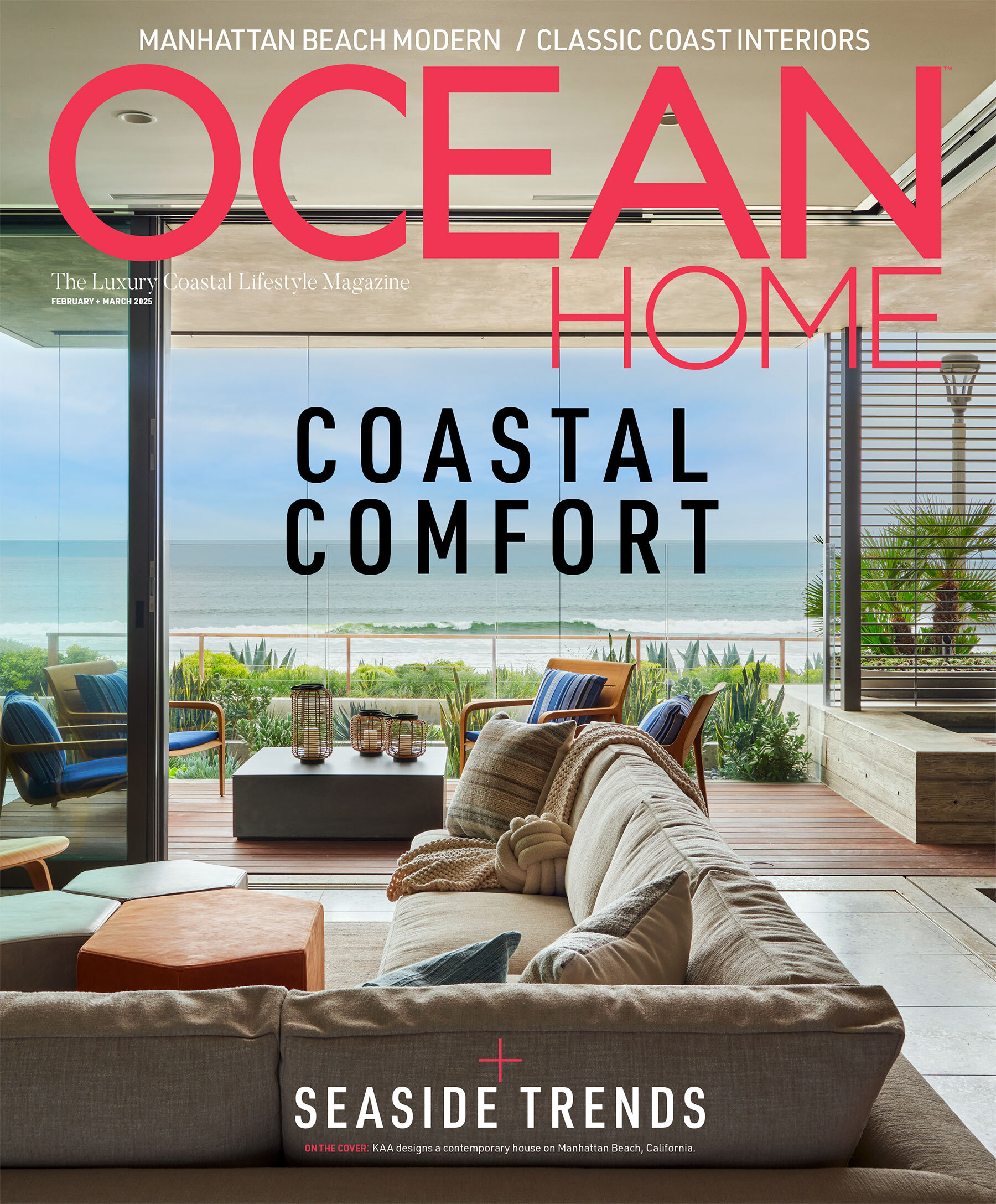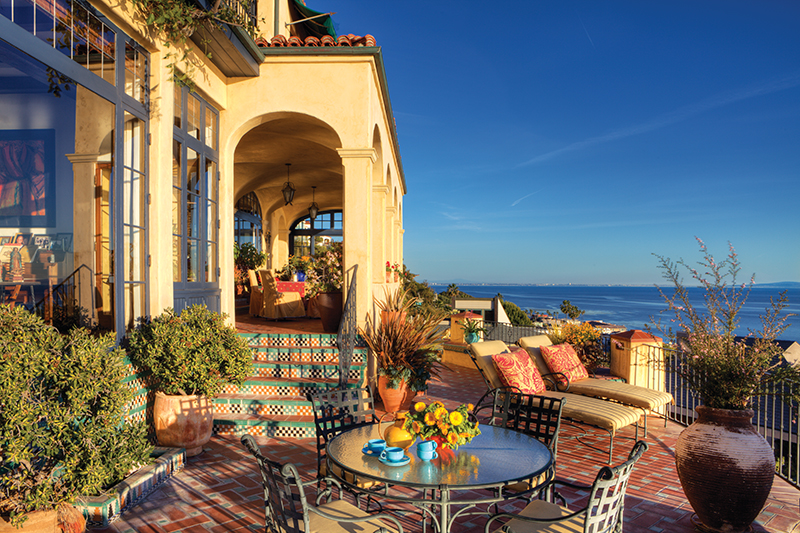Architect Lewin Wertheimer likes to think of himself as a chameleon.
“Rather than being known as a signature architect, I love the diversity of design,” says Wertheimer, who owns a boutique firm in Venice, Calif., the vibrant beachfront neighborhood in the Westside area of Los Angeles.
“I don’t do just one particular architectural style,” he adds. “I design to meet my clients’ dreams. I like to think that clients come to me because I can do anything.” Still, if asked to name his favorite type of design, he admits a fondness for Mediterranean architecture – especially the charming cliff-hugging homes, nestled in steep hillside towns looking out to the sea.
“I confess that I especially love vernacular architecture – homes that are not designed by an architect – such as those found in the historic hill towns of Tuscany and Spain,” says Wertheimer, an L.A. native who grew up between southern California and southern Spain, and studied in Florence, Italy, as well as Madrid, Spain. “I love the romance, simplicity, and use of local materials and colors.”
Whether he’s designing a Mediterranean villa, beachfront cottage or Southern California modern, Wertheimer homes invariably feature an innate graciousness, exuding comfort and careful attention to detail.
Those characteristics are immediately apparent in Wertheimer’s very first project in 1993. Malibu homeowner Jean Craig had lost her house in a devastating wildfire and hired Wertheimer, who had just opened his firm, to rebuild on the charred site.
Wertheimer was struck by the similarity of the location to the hill towns throughout the Mediterranean. “It’s a very small property, sitting on a steep cliff, surrounded by streets on one side and the ocean on the other,” he says. “The challenge was how to gracefully place the home on this complicated site, while taking advantage of the spectacular water views.”
Rather than thinking of the location as a problem, he drew inspiration from it. The solution? “I allowed the house to engage itself with the site,” he explains. The result is a home with a symmetrical, traditional presence at its entry, with smaller windows, plaster grillwork, and a balcony above the front door. But that formality changes in the ocean-facing rear of the home, which becomes reminiscent of houses found in the romantic hillside villages in Italy and Spain.
“The back of the home is more sculptural, less symmetrical. This is where I brought in all the glass for those amazing views,” Wertheimer says. “But people don’t notice the architectural transition because it happens gracefully.”
The 3,000-square-foot ochre-colored home that rose from the ashes is nothing less than stunning – if a little hard to categorize. Wertheimer defines it as “Spanish colonial revival with some Italian flavorings.”
There is a cornice above the front door. The checkerboard tile staircase is influenced by the stairway in El Greco’s house in Toledo, Spain, while the custom-colored plaster with a built-in patina is reminiscent of a Tuscan villa.
The design is purposefully eclectic. “My client travels around the Mediterranean a lot, and she is in love with Mediterranean architecture. But she also has eclectic taste in art and design, so she didn’t want a ‘pure’ anything,” Wertheimer explains.
“And here in Los Angeles, nothing needs to be so precious. She wanted something to represent her travels and her loves, and not just one country but many.”
Both Wertheimer and the owner are partial to tile. “One of the owner’s first comments to me was, ‘I want heroic use of tile,’” Wertheimer says. “She wanted a bold tile statement and didn’t want to be shy about its use. I have also always loved tile, so this was a great opportunity to do as much beautiful tile as I could. We loved the idea of bringing in a lot of Malibu Tile patterns.”
Every tile in the Craig home – on the staircase, the fireplace, the walls, the deco tiles in the bathroom, and the aqua-colored outdoor fountain – was hand-glazed by artisan Felix Schmeing of Ceramic Concepts, who specializes in Malibu Tile reproductions.
Wertheimer worked closely with his husband, Henry Murray, a playwright and landscape designer, to create the home’s Mediterranean garden.
The colors, inside and out, are the first thing people notice, Wertheimer says. “In fact, the owner once arrived home to find a neighbor chipping off a sample piece of plaster,” he laughs. “They had a lot of nerve, but people really do love the ochre color.”
Wertheimer describes the home as a “casual, take- off-your-shoes hang.” The main rooms lead directly to the glass-sided loggia, which serves as an outdoor dining room and family room – and in many ways is the heart of the home. With its columns, arches and vaults, the deep, large space has a “formal regularity, but it is informally furnished,” adds Wertheimer.
“Nothing is ‘precious’ about the home,” he says. “It’s grand, with high ceilings, but it’s also familiar and inviting. All the materials are durable and the flow is open and comfortable. When people walk in the front door, they feel they know this home like an old family friend. There is no formal dining room – the eating area is in the kitchen which has a seating alcove and fireplace.”
Despite his ability to accommodate an owner’s eclectic tastes, Wertheimer admits he’s not a fan of “disconcerting homes that feel like each room was designed by a different designer.” Nor does he like homes “that you walk in and do a double take because it looks like a stage setting.”
Wertheimer’s primary goal is always to create homes that have a “comfortable graciousness, with flow and function, and consolidation and homogeneity of design, that holds the home together.”
And now, with the hindsight of some 20 years, how does he feel about his first project, the Craig home? “I really nailed it,” he says. The owner clearly agrees, with barely a thing changed since it was built.
For more information on Lewin Wertheimer, visit wertheimer-architect.com.
Image Credits: Photos by Douglass Hill .


